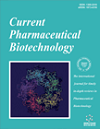-
oa Editorial [Hot Topic (1): Update on Inflammatory Processes Governing Atherosclerotic Plaque Vulnerability and Reperfusion Injury (Guest Editors: Fabrizio Montecucco and Francois Mach)]
- Source: Current Pharmaceutical Biotechnology, Volume 13, Issue 1, Jan 2012, p. 1 - 3
-
- 01 Jan 2012
Abstract
Several diseases clustering metabolic syndrome (such as arterial hypertension, type 2 diabates mellitus, dyslipidemia and central obesity) have been shown to favour atherogenesis and the increase of acute cardiovascular events [1]. Evidence from both basic research and clinical studies has validated these “classical” cardiovascular risk factors as crucial targets for treatments to reduce atherosclerosis and its complications. Some molecular and mechanical mechanisms (such as circulating lipid infiltration within arterial intima and shear stress) underlying atherosclerosis have been well established [2]. However, despite considerable efficacy, selective treatments failed to completely reverse cardiovascular diseases. Thus, during the last decades, some new factors that might also influence atherosclerosis have been investigated [3]. At present, the most important research field is represented by inflammation and immunity [4]. This has been suggested by inflammatory processes underlying plaque formation and maturation. In addition, chronic inflammatory diseases (such as rheumatoid arthritis and systhemic lupus erythematosus) have been associated with atherosclerosis acceleration [5-7]. Both systemic and local inflammatory mediators have been shown to differently orchestrate atherogenesis. Soluble chemokines are produced already during early stages of endothelial activation and increase inflammatory cell recruitment. Once retained within atherosclerotic sites, these cells further release soluble mediators, which attract other circulating inflammatory cells from the blood stream and increase local cell differentiation and secretion of toxic mediators. Cytokines and chemokines maintain chronic inflammation within plaque lesions, regulating atherosclerotic arterial remodelling. In advanced atherosclerotic stages, soluble chemokines and cytokines may also promote intraplaque calcification, a crucial step leading an increased vulnerability till plaque rupture [4]. Atherosclerotic lesion may rupture within the lumen and induce a thrombotic total occlusion of the vessel. The acute interruption of the blood flow caused ischemic injury in the downstream tissues. In the heart, brain or other peripheral tissues, acute and prolonged ischemia causes irreversible cell death, a condition inducing organ injury, remodelling and function failure [8]. Similarly to what is observed for atherosclerotic plaque vulnerability, inflammatory processes also modulate tissue injury after ischemic events [9, 10]. During both chronic ischemia or post-ischemia reperfusion (when the restoration of antegrade flow within the infarctrelated coronary artery is performed), leukocyte recruitment within ischemic tissues is triggered by chemokines. Activated inflammatory cells together with necrotic or apoptotic cells within infarcted tissues release reactive oxygen species (ROS), which increase ischemic damage and favour unfavourable post-ischemic organ remodelling Fig. (1). Thus, depending on the peripheral organ, acute complications of atherosclerosis may induce dramatic diseases. In particular, acute ischemia affecting the myocardium (acute coronary syndromes), or the brain (transient ischemic attack or ischemic stroke syndromes) represents the major cause of cardiovascular morbity and mortality [8, 11-13]. Given the pivotal importance to reduce social and financial costs due to cardiovascular diseases, great effort has been done to identify new selective treatments to prevent acute cardiovascular events. Treatments targeting atherosclerotic inflam-mation are among the more promising approaches in reducing both atherosclerotic plaque vulnerability (primary prevention) and post-ischemic tissue injury and organ remodelling (secondary prevention). In the present issue, authors will discuss on recent molecular targets such as C-reactive protein and connexins that have been suggested to induce a dual activity as mediators of intraplaque vulner-ability and tissue injury [14, 15]. Antiinflammatory treat-ments and biotechonologies targeting intraplaque vulner-ability and peripheral organ resistance to ischemic injury will be also critically updated. In particular, the present issue will focus on the debate in the clinical use of certain antiinflammatory drugs (such as non-steroidal anti-inflammatory drugs [NSAIDs], corticosteroids or immunesuppressive compounds) in acute myocardial infarction and stroke [16-18]. Given great discrepancies in efficacy and safety in different studies, we believe that caution should be used in therapeutic strategied including immunomodulatory drugs. Contro-versies have been also raised about the possible use of cannabinoid agonists/ antagonists as well as anti-oxidants medications in acute myocardial infarction and reperfusion injury [19]. The low specificity of anti-oxidants reperesents the greatest limitation deriving from research studies. On the other hand, recent evidence from in vitro and animal models suggested that probably a combined approach inhibing CB1 cannabinoid receptor and activating CB2 cannabinoid recep-tor pathways could represent promising therapeutic options [20]. However, the recent withdrawal for the makert of CB1 receptor antagonists rimonabant due to the significant increase of major psychiatric adverse events has partially reduced preliminary enthusiasms. At this regard, major efforts should be done to better understand endocannabinoid system pathophysiology and synthesize selective canna-binoid agonists/antagonists with reduced activities on the central nervous system. Selective anti-chemokine or anti-Toll-like receptor treatments represent another promising approaches to reduce acute atherosclerotic complications [21, 22]. Emerging evidence from animal models strongly supported a possible use in the near future in clinical trials. Together with statins, more selective anti-inflammatory molecules (such as anti-chemokine drugs) could improve cardiovascular outcomes in high-risk patients. Several diseases have been classically associated with an increased risk of acute cardiovascular events. To further highlight this aspect, we included a clinical update on HIV patients and associated cardiovascular morbidity. Recent evidence also from our research group has shown that upregulation of certain soluble cardiovascular risk markers is associated to viral load rebound when antiretroviral therapy is interrupted [21]. Conversely, long-term treatments with antiretroviral medications induce lipid abnormalities and centripetal adipo-sity, thus favouring acute cardiovascular events apparently through dislipidemic pathways. Given the prolongation of life expentance in HIV patients and the increased diffusion of the infection, this aspect clearly represents an “hot-topic field” in cardiovascular researches. To summarize, we have tried to highlight promising therapies and biotechnologies targeting novel inflammatory mediators to decrease both plaque vulnerability and reperfusion injury in acute athero-sclerotic complications. On behalf of all authors, we hope that this issue will create enthusiasm and suggest to readers potential interesting hints for their current debates and future investigations......


